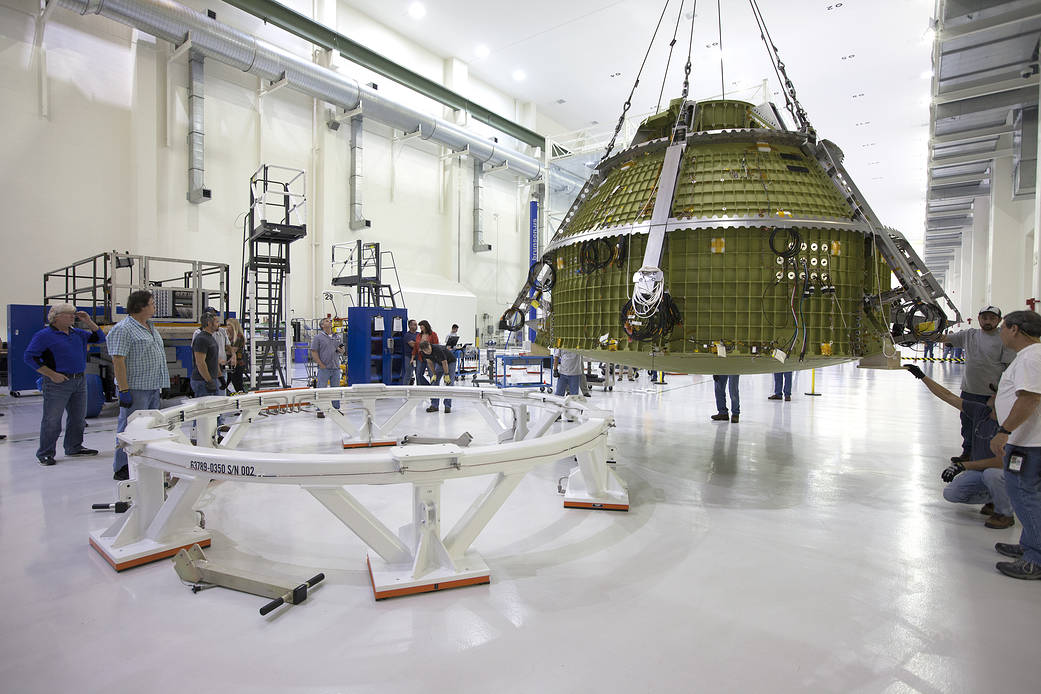
The Orion spacecraft crew module for Exploration Mission-1 (EM-1) is lifted into a test stand for pressure testing in the Neil Armstrong Operations & Checkout Building at NASA’s Kennedy Space Center in Florida. A team from NASA and Lockheed Martin is getting ready for Orion’s proof pressure testing, an evaluation that will help verify the structural integrity of Orion’s underlying structure known as the pressure vessel.
The work is an important milestone on Orion’s journey toward EM-1, its mission atop the Space Launch System rocket in 2018. EM-1 will not have humans aboard, but it will pave the way for future missions with astronauts and for missions to Mars. During this flight, Orion will travel thousands of miles beyond the moon over the course of about three weeks.
Assembling and testing Orion for the EM-1 mission is taking place at locations across the United States and abroad. At NASA Glenn’s Plum Brook Station in Ohio, engineers are testing a structural representation of the service module with sound pressure and vibration. Meanwhile, at Langley Research Center in Hampton, Virginia, engineers are in the thick of a series of tests, dropping a representative Orion crew capsule in Langley’s Hydro Impact Basin to understand what the spacecraft and astronauts may experience when landing in the Pacific Ocean after deep-space missions. Finally, the first flight module of the Orion service module, provided by ESA (European Space Agency), was delivered this week by Thales Alenia Space to the Airbus Defence and Space, which is building it, to its location in Bremen, Germany.
Image Credit: NASA

























